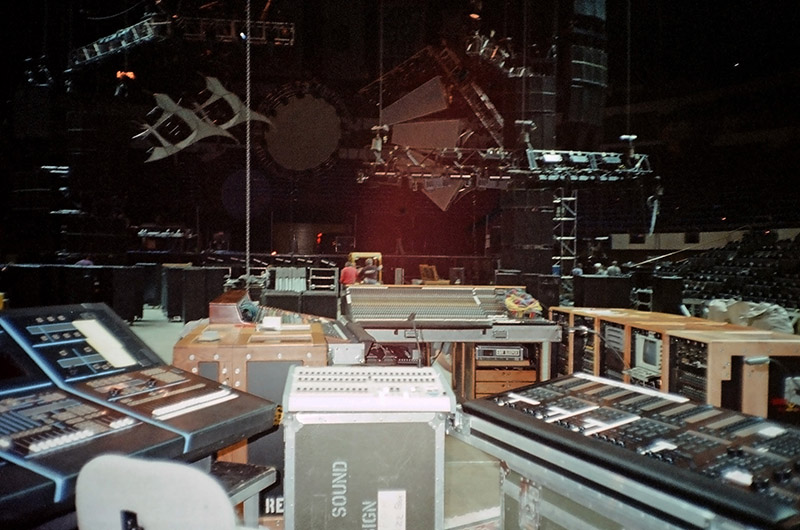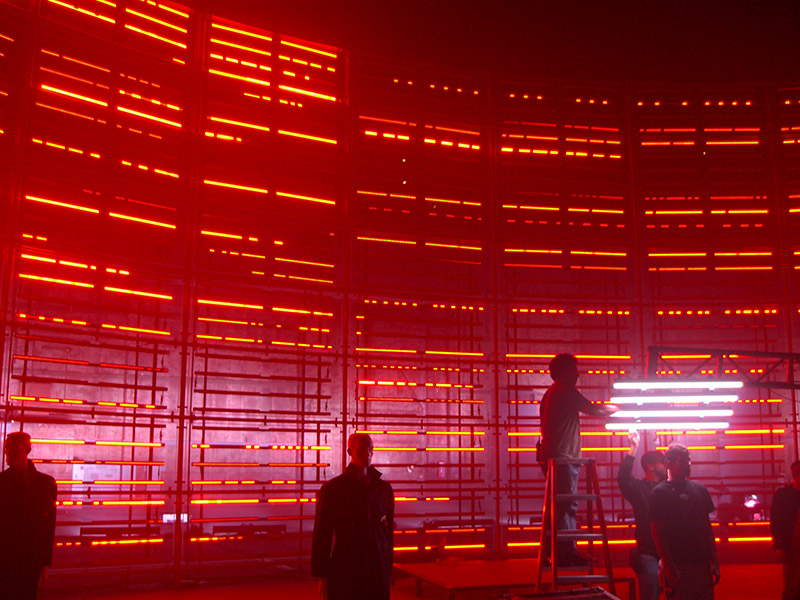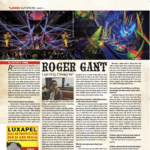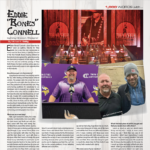
Veteran entrepreneur and CEO Nils Thorjussen has been a part of a number of successful, and influential, companies in the entertainment technology field, including Flying Pig Systems and Element Labs. After graduating with an MBA from Stanford University, Thorjussen “didn’t want to get a real job”. Instead he joined up with Tom Thorne and Nick Archdale to form Flying Pig in 1991, developing the Wholehog line of lighting consoles. Flying Pig’s control products were embraced by the industry, and the company was eventually acquired by High End Systems. Thorjussen then went on to co-found Element Labs in 2003, where both the Stealth video product, a foundational innovation leading to many of today’s video products, and the still-in-demand VersaTube were developed. Now, Thorjussen is the CEO of the Philadelphia-based Verge Aero, a startup focused on the use of drones and robotics in entertainment applications. After a few years in what Thorjussen describes as “stealth-mode,” Verge Aero has emerged to explore the potential of what drones and robotics can bring creatively while addressing the myriad of technical and programming considerations for a more user-friendly interface.

Tell me about the milestones in your career.
With Flying Pig, we launched at PLASA in 1992, and we received the Product of the Year award. But we had no business, we were out of money, and it took a little while to get going. After a few months, we finally got Sting, Peter Gabriel and the Grateful Dead — those were our first three major clients. Those were the first milestones, and then it grew from there. The release of the Wholehog II console was really important because we were able to expand the scope of what we were doing, and at that point we had a really clear vision for what was needed in the industry; what would be successful. It was this sort of intersection between theatrical lighting and more live concert lighting; those techniques and being able to fuse them together. That was really, really powerful. That was when we acquired so much momentum.
When I started working with Element Labs that was based on an idea that originally came from Wynne Willson Gottelier, LTD [WWG was a partnership of designers and inventors, Peter Wynne-Willson and Tony Gottelier]. They came up with the idea of pixelated LED behind a diffuser to look like neon or fluorescent tubes. I had seen the prototype they had worked up and I thought that was just so cool. I had to turn it into a product and get it out into the hands of the creatives and the industry. I knew there was so much that could be done with VersaTubes. The real milestone there was getting the Coldplay Speed of Sound video. That gave us a lot of publicity, and people took notice, and it spread. The product was very versatile, and people could use it for all kinds of things. There was period where, you know, every major award show and production used it in some way. Today, there are many imitators, but yeah, it just keeps going on and on, it’s amazing that effect has had huge legs.
With Stealth, we morphed into more high-res LED products and when we got a big Stealth system on Madonna’s Confessions tour in 2006 that was a huge second milestone for Element Labs.

How did Verge Aero come about?
After Element Labs got big, I handed over the reins so I could enjoy life a bit more. I chilled out and kind of left the industry; worked on other projects. A few years ago, I’d been noodling and saw a TED video of Vijay Kumar, from the School of Engineering at the University of Pennsylvania, flying drones in formation. Drones doing autonomous activity. I just thought, ‘Wow, this would be really cool to do in entertainment.’ It took me a while to find the right people to work with; I eventually found this team of people working on a similar concept to what I was interested in doing; we joined forces, and here we are. So really it is from the original inspiration of seeing that video, I just recognized that so much cool stuff could be done in entertainment. Knowing the network of creative people that I’ve worked with for so many years, through all my companies and everything — I just thought that they could really benefit from having this technology in their toolkit because they are always looking for new and interesting things to put into their productions.
How do you see Verge Aero fitting in the industry?
There’s all this great work that’s been done by other companies with drones in entertainment — Intel, Verity Studios and SkyMagic, a Singapore company. What’s really missing is making it easy for designers and creative people to control the drones, program them, integrate them into the show, and so that became sort of my vision of what needed to happen next. I think it’s also not just about drones, I think its robotics more generally. Essentially, what we’re making are robots. They just happen to fly. So, if somebody wanted a swarm of automated cars, instead of automated flying things, for example, there’s no reason we couldn’t do that. I just think there are endless creative possibilities for robotics within entertainment and making it easy to deploy them is what it’s all about for us at Verge.
I remember from Flying Pig days, when our product really took off and we hit critical mass with what was our effects engine. That was when you could press a couple of buttons and “poof!” You’ve got a perfect ballyhoo. So, Verge is the same kind of thing. You need that level of user-friendliness, and you need the toolkit to be able to make things happen efficiently, because people don’t have time otherwise. With drones, there’s a lot of complexity involved in flight paths and making sure they don’t collide and doing all those calculations and all that kind of stuff. And so my goal is to eliminate those concerns from the creative professional so they can just focus on doing their thing. They just don’t have to worry about all this other technical infrastructure to use drones, to use robotics. We’ve designed an architecture to be able to accommodate a wide variety of use cases. We’ve made a platform where people can come to us with their wacky ideas and ask, ‘Hey, can we do this?’ Then it starts the process of marrying creative fantasy with reality, and then you get something that comes out of that that’s very cool and that’s doable.
What has surprised you most during your career?
How random and unpredictable life is. I like startups, I like smaller companies, and I like being very hands on. Because that’s how you innovate. I also think things go in cycles and waves. There are waves of innovation. Automated lighting was one. LED was another. I think that the next wave of innovation is robotics oriented.
For more information on Nils’ new company, Verge Aero, go to www.vergeaero.com.


